Many kinds of ornamental grasses come into their own at this time of the gardening year, adding long-lasting structure, texture and interest in the form of their sculptural foliage, long-lasting flowers and seed-heads. Here’s a little look at 12 of the best.

1. Foxtail barley (Hordeum jubatum)
An ornamental grass so beautiful in flower that it’s almost impossible to resist the temptation to stroke those silky, feathery, rose-gold panicles. Classed as an annual or short-lived perennial, this needs full sun and a free-draining soil to thrive but when it does, it will readily self-seed. A beautiful addition to a vase or a dried flower bouquet as well as to the front of a sunny border, it reaches an average height and spread of 60cm by 30cm.
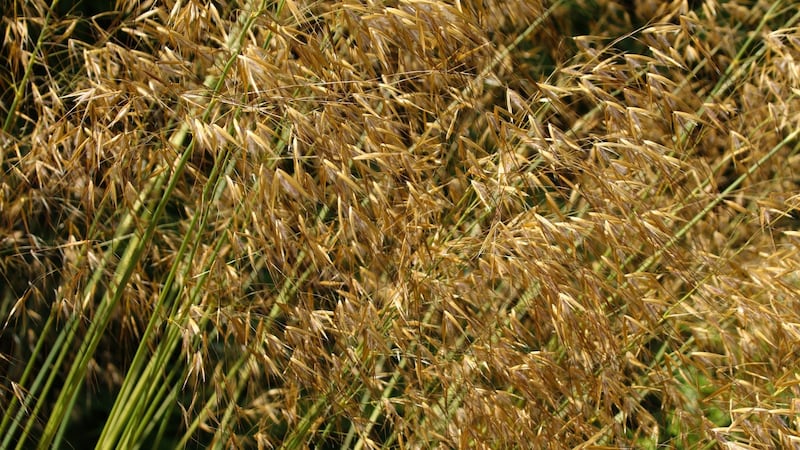
2. Giant oat grass (Stipa gigantea)
A famously show stealing, supremely elegant, hardy ornamental grass with giant plumes of evergreen foliage and tall, graceful, long-lasting flower spikes that fade to dusty gold as autumn beckons, this stately plant is the star of many contemporary meadow-style perennial planting schemes and will grow well in even exposed seaside gardens. Position it to the middle or back of a border where its golden flowers and seed heads will be backlit by evening sun. Reaching an average height and spread of 2.5m by 90cm, Stipa gigantea loves full sun and a fertile but free-draining soil.
3. Green drops (Panicum miliaceum violaceum)
I grow this short-lived, fast-growing annual grass as a cut-flower crop from seed sown under cover in spring. But it also makes a very beautiful addition to a mixed summer border with its tall, slender growth habit and elegantly arching green/purple flower plumes which appear from early summer onwards. For real impact, plant it en masse in large groupings but tightly spaced (8cm-20cm apart) towards the back of the border or to punctuate lower planting. It needs an averagely fertile, free-draining soil and a sheltered, sunny position out of strong wind and reaches an average height of 120cm-150cm.
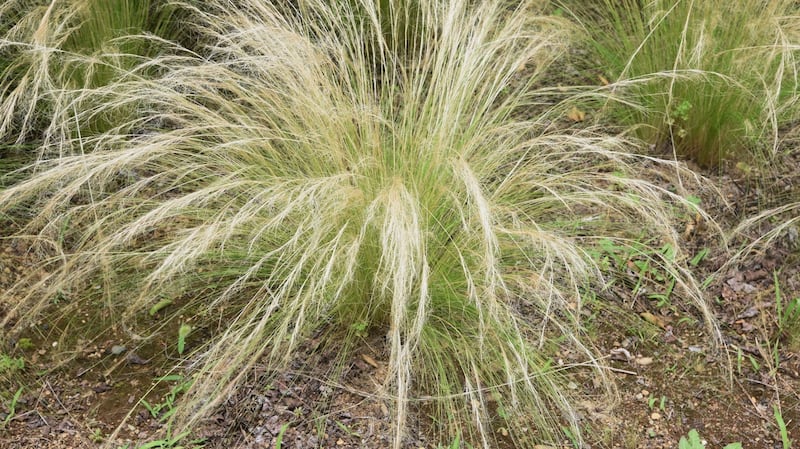
4. Pony tails (Stipa tenuissima, also called Nasella tenuissima or Stipa tenuifolia)
One of the best known ornamental grasses, some would argue that it’s overused in contemporary garden design to the point of ubiquity. But it’s a classic for a reason, forming graceful clumps of slender, almost transparent foliage that gently sway in the slightest breeze and which slowly change in colour from silver-green in late spring to burnished gold by late summer. A brilliantly versatile, relatively compact, sun loving, semi-evergreen hardy species that looks wonderful threaded through a flower border or gravel garden, it reaches an average height and spread of 60cm by 30cm. Although relatively short lived, it often self-seeds where it’s happy. Needs full sun and a well-drained, not overly fertile soil.
5. Pheasant’s tail grass (Anemanthele lessoniana, also called Stipa arundinacea or Calamagrostis arundinacea)
A wonderful warhorse of an ornamental grass that’s capable of growing quite happily in dry shade, making it one of those plants that designers rely on for the trickiest of spots in the garden. Pheasant’s tail grass forms dense, evergreen, weed suppressing clumps of delicate copper-tinted, arching foliage that combines beautifully with late summer flowering perennials and also acts as an elegant foil for tall spring and early summer flowering bulbous plants. Happy in sun or shade (as long as it’s not in deep gloom), it likes a moderately fertile, free draining soil.
6. Feathertop (Pennisetum villosum ‘Cream Falls’)
Another ornamental grass that I grow as a cut-flower crop for its irresistibly tactile, feathery white, cylindrical flower plumes which appear from early summer until autumn, this sun loving half-hardy perennial species is a great choice for the front of a border or for a large pot or container. Not reliably perennial in colder Irish gardens, it can be treated as a fast growing annual and is easily raised in spring from seed sown under cover. Give it a fertile, moist but free-draining soil in full sun or light shade and to optimise its chances of overwintering, mulch with bracken around the base of plants in autumn to protect the roots.
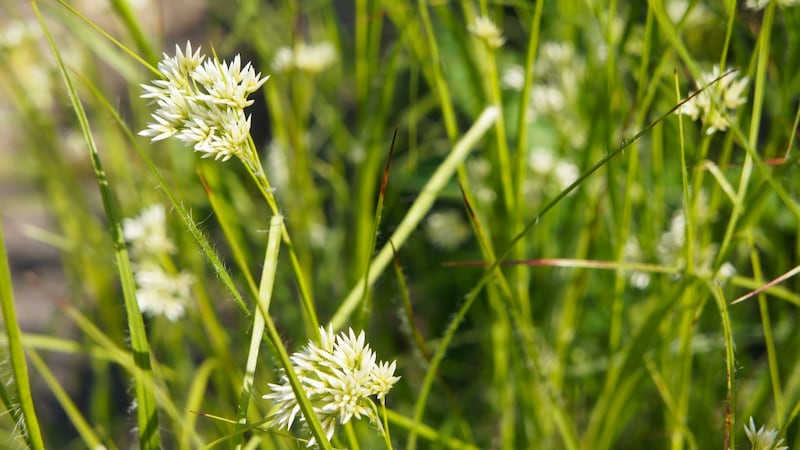
7. Snowy woodrush (Luzula nivea)
Technically not an ornamental grass but a type of ornamental rush with clumps of slender, grassy leaves and panicles of pretty white flowers that appear in late spring/early summer, this hardy perennial is a great choice for a damp, cool, shady, semi-wild spot in the garden where it will naturalise over time to provide excellent evergreen groundcover. Height and spread of 60cm by 45cm.
8. Japanese forest grass (Hakonechloa macra)
Its elegant growth habit and understated beauty has made this perennial deciduous grass an enduring favourite with garden designers and landscape architects who love to use it mass planted as the "glue” to bring a planting scheme together. A great choice for a cool, rich, moist but free-draining soil in sun or shade, it slowly forms low, neatly arching clumps of cascading foliage that fade to golden brown and russet in autumn. Both the species and the golden-leaved form, Hakonechloa macra ‘Aureola’ are also great as pot grown specimens, reaching an average height and spread of 30cm by 40cm.
9. Tall moor grass (Molinia caerulea subspecies arundinacea ‘Skyracer’ )
A tall, supremely elegant, hardy perennial grass with a strongly vertical, architectural silhouette, its almost transparent, feathery flowers and seed-heads are one of the joys of the late summer/autumn garden. Happy in sun or light shade and most soils, it reaches an average height and spread of 150cm-180cm by 100cm.
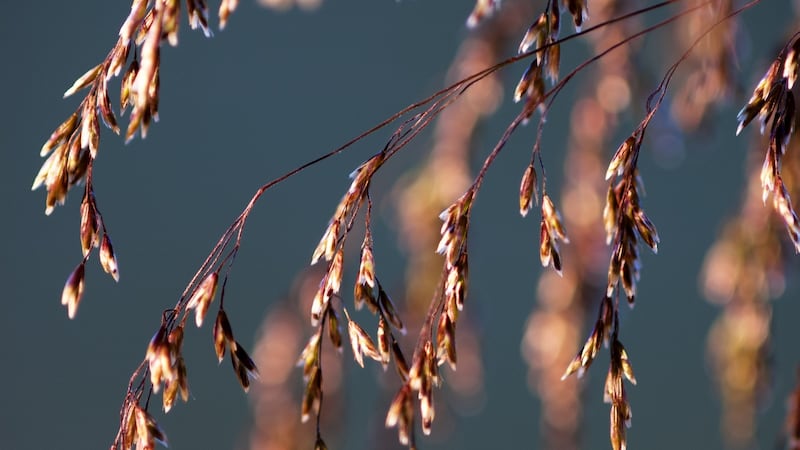
10. Tussock grass (Deschampsia cespitosa ‘Goldschlier’)
One of those ornamental grasses that adds a precious glimmer to the garden with numerous, tall, ultra-slender stems of silver-green flowers that emerge above evergreen clumps of foliage in early summer, slowly fade to gold by early autumn and then persist well into winter. The varietal name ‘Goldschlier’ translates as ‘Golden Veil’, an accurate description of this hardy perennial’s delicate beauty. Happy in sun or light shade as long as it’s grown in a moist but free-draining soil, it slowly reaches a height and spread of 60cm-90cm
11. Miscanthus sinensis ‘Yakushima Dwarf’
Many miscanthus varieties get too large and sprawling for the average sized garden but this compact form reaches an average height and spread of just 80cm by 30cm. This variety is a reliable performer in Irish gardens, forming a handsome clump of narrow-leaved foliage from which its long-lasting panicles of feathery spikelets emerge in autumn. Combining beautifully with most late flowering perennials, this deciduous grass needs full sun and likes a moist but free-draining soil.
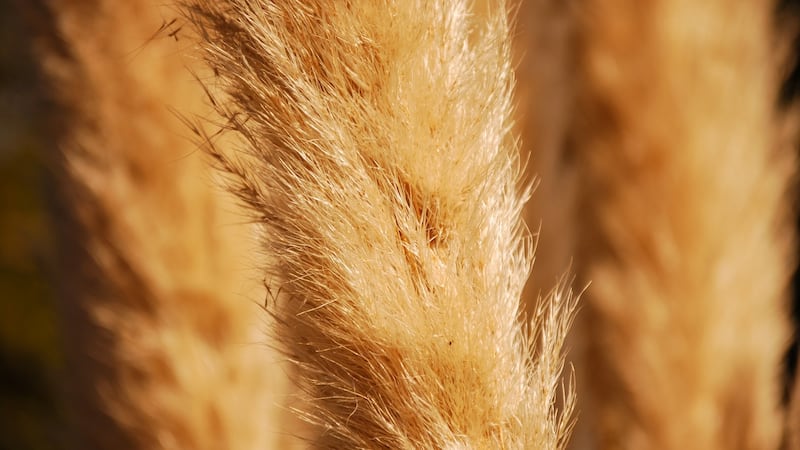
12. Feather reed grass (Calamagrostis x acutiflora ‘Karl Foerster’)
A fast growing, deciduous ornamental grass that’s justifiably earned the status of garden classic, with neat clumps of arching leaves and tall, strongly vertical flower spikes that fade to silver-brown as the summer progresses. Brilliant for adding an architectural quality to a planting scheme, and happy in full sun or partial shade, this hardy perennial likes a well-drained soil. Height and spread of 1.5m by 90cm.
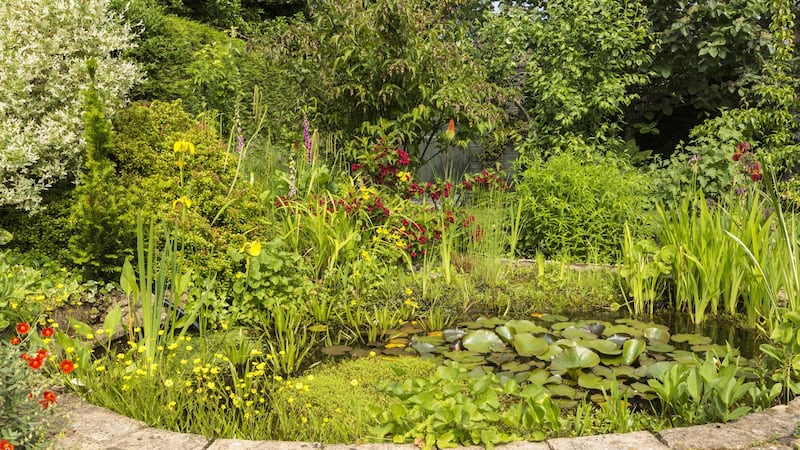
This week in the garden
Moulds and mildews can often become a problem in the polytunnel or glasshouse at this time of year as a result of a combination of various factors including competition for growing space and nutrients plus the cooler night-time temperatures of early autumn. So make sure to keep these covered growing spaces well ventilated, reduce watering and regularly handpick and bag any diseased or damaged leaves to help keep plants healthy.
Garden ponds can also easily get clogged up with decaying foliage and debris at this time of year leading to unhealthy growth of bacteria in the water so take the time to remove any rotting leaves, faded flowers and to gently thin out any excess growth of oxygenating plants if they’re covering the surface. If water levels need to be topped up, use rainwater rather than tap water.
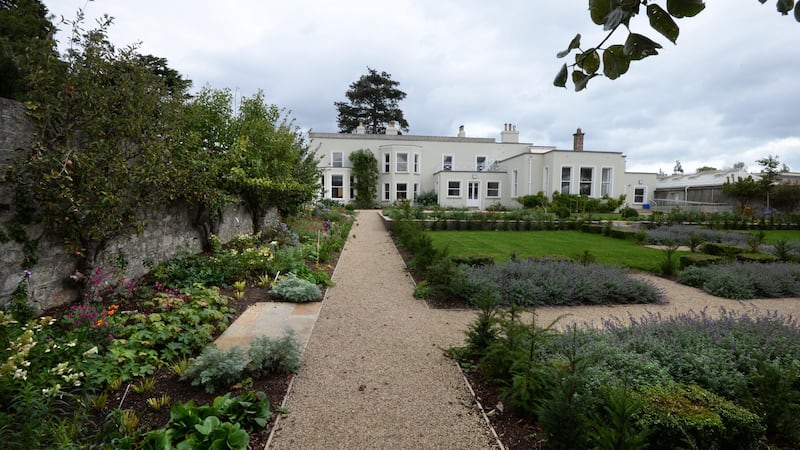
Date for your diary
Sunday, August 29th (9.30am-5pm), Airfield House and Gardens, Overend Way, Dundrum, Dublin 14, Irish Specialist Nursery Association's late August show will take place with with many ISNA members selling a wide range of herbaceous perennials, clematis, trees and shrubs and garden paraphernalia, see irishspecialistnurseriesassociation.com and airfield.ie












